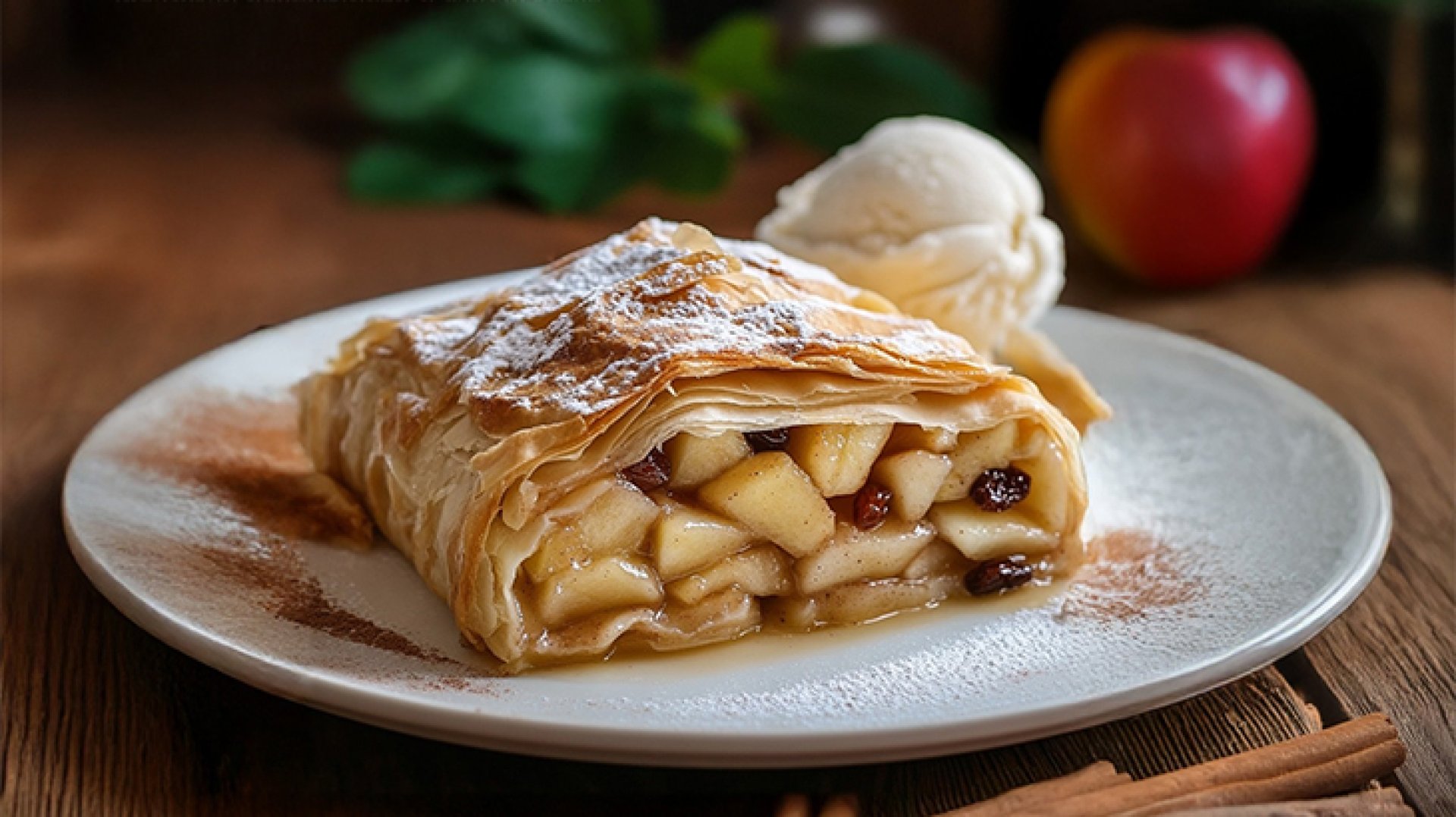Apple Strudel

A Journey from Ottoman Baklava to Viennese Delight
Apple Strudel, or Apfelstrudel, traces its roots back to Ottoman baklavaa pastry of layered filo and nuts. Austrians reimagined the concept using local ingredients, creating a sweet filling of apples, cinnamon, raisins, and nuts wrapped in delicate filo pastry.
Imperial Favorite Turned National Icon
By the 18th century, Apple Strudel became a staple in the Habsburg Empire, especially among the elite in Vienna. Over time, it earned its place as a national dessert of Austria, served at feasts, cafes, and royal banquets alike.
Regional Variations Across Europe
As the dessert spread, many regions adapted it:
- In Hungary, it became Rétes, often filled with potatoes or breadcrumbs
- In the Czech Republic, its known as Štrúdl, often with pear or apple
- In northern Italy, they use Golden Delicious apples from Val di Non, pairing them with walnuts, sugar, lemon juice, and cinnamon
A Versatile Pastry Beyond Apples
Though apple remains the classic filling, modern variations include:
cherry, apricot, almond, semolina, poppy seed, meat, cabbage, ham, mushroom, parmesan and moreshowcasing its culinary adaptability
Classic Serving Style
Traditionally served warm with a dusting of powdered sugar, Apple Strudel is best enjoyed with:
- Whipped cream
- Vanilla ice cream
- Wiener Melange (Viennese coffee similar to cappuccino)


